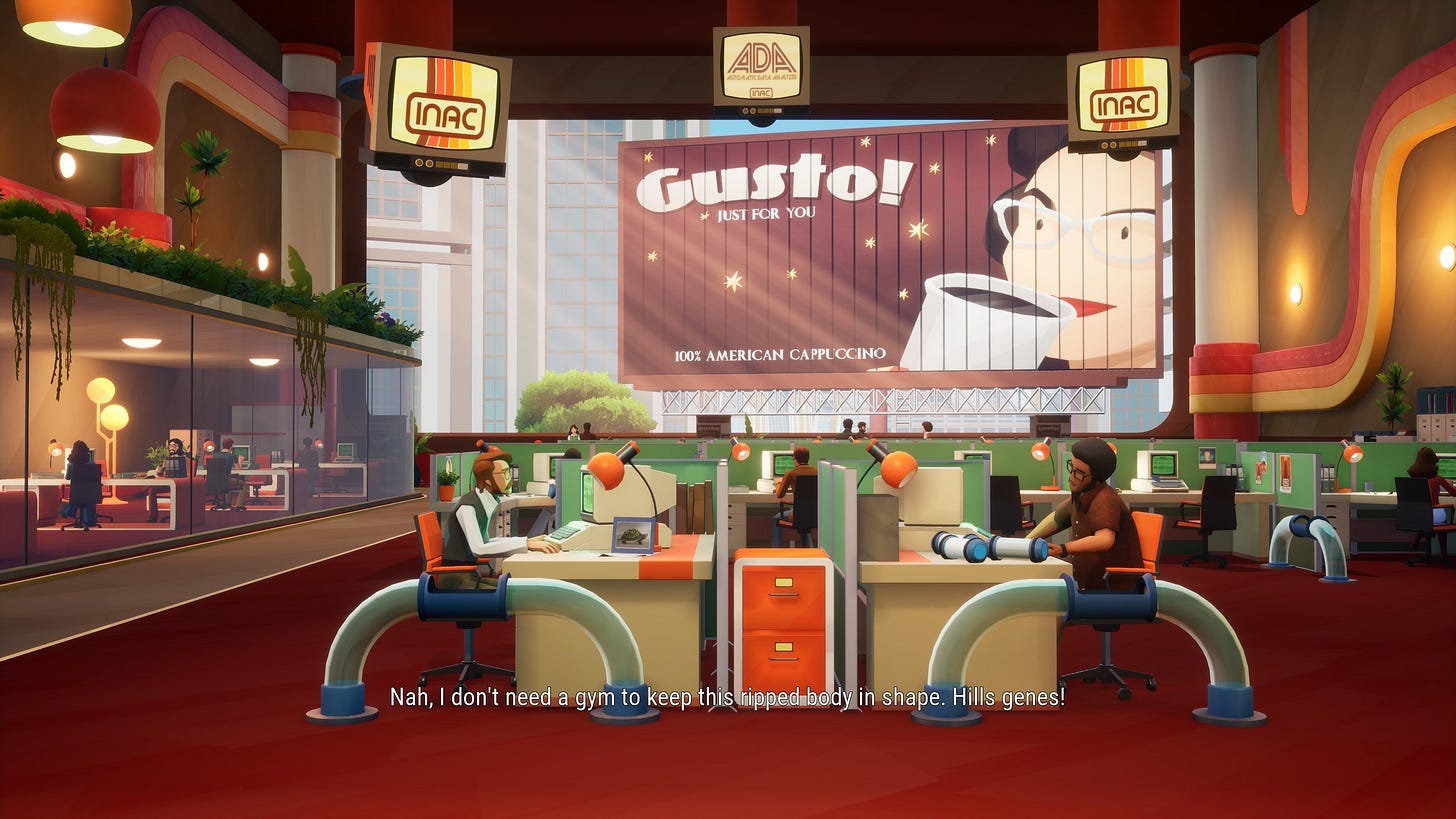I’m late, I know. Honestly I feel like 2023 has been yet another crazy year for me which is why I’ve been very sporadic in posting about video games (that and I couldn’t stop playing Cyberpunk 2077). There also wasn’t a lot of architecture I wanted to write about. I was hoping games like Dave the Diver and Dredge would have some interesting architecture, but (despite being really fun games) they didn’t offer a lot. Anyway, I’ll try to do more in 2024.
2023 was an incredible year for video games, and I probably played less than half the games I wanted to write about, and wrote about less than half the games I played. I might revise this list in the middle of the year if I get around to playing those games, permitting that there aren’t five massive releases with in a month (looking at you September to October 2023). I think there were a few games that blew me away with their design and what they allowed the architecture to do and here they are.
Honorable mention: Baldur’s Gate 3. Couldn’t put it on my list because I had such massive performance issues, but it did seem nice. I’ve since built a custom PC with a CPU I think could handle it, so I’ll touch base on this if I ever play it again.
5. The Case of the Golden Idol
The Case of the Golden Idol I haven’t gotten all the way through yet, but I love creepy puzzle games. The pixelated design creates an eerie aura that games like The Return of the Obra Dinn implemented to perfection. I plan to write about this if and when I finish it, but I think its worth getting on the radar.
4. American Arcadia
Along the same lines as The Case of the Golden Idol, I have not finished American Arcadia. I was looking forward to this as Out of the Blue’s follow up to the also creepy puzzle game Call of the Sea. The game is a side scrolling adventure and rather than let the game’s linear horizontality crunch down (like the Ninja Turtle arcade game) the architecture is soaring and everything is extra tall and extra stretched. My instinct is that this is to fill out the screen, but I think some of it is the unique art direction. The framing of each scene has been one of the more interesting aspects, but it’s hard to pin down what feels so weird about it. Maybe it’s the one-point perspective, or the layering. I’m not really sure, but I’ll try to figure it out?
3. The Legend of Zelda: Tears of the Kingdom
Alright, getting into the games I’ve actually finished and had interesting architectural ideas. Even though I liked Tears of the Kingdom’s predecessor much better, I found the architectural exploration far more interesting here. Besides the impressive crafting system and the absolutely busted and awful build your own house system, there were some specific acknowledgements to the architectural design this time around. It also allowed us to experience far more of the architecture in a new and innovative way, but traversing through ceilings and floors.
2. Cyberpunk 2077: Phantom Liberty
I hesitated putting this on the list since Cyberpunk 2077 was an existing game, and one I’ve played several times before this year so I had a lot of experience and biased attachment to Night City. That said, I felt there were an incredible number of architecturally significant additions to the game that blew me away. The references to Las Vegas and the way in which it forced me to reevaluate the architecture and urban design of Night City. I think the games industry (especially the AAA game makers) need to pay attention to what was created here (indies keep doing your own thing).
1. Jusant
Jusant came out of nowhere. I’ve long-loved the idea of climbing and spelunking games (I always wanted to be a spelunker, but being as tall as I am makes it hard). When this was revealed during the Xbox Showcase I figured I would give it a shot at some point, due to the great art direction, innovative game mechanisms, and it was created by Dontnod, which is a studio I greatly respect. What I didn’t expect was a game that took Shadow of the Colossus’ climbing scale amplified to orders of magnitude and littered with unique architectural styles intertwined with microclimates and story beats. Jusant makes it clear that (and is something I mentioned as one of the positive things in Viewfinder) architecture is rarely only about building material, light, and level design. There are so many parts of architecture that rarely get explored in video games and Jusant’s focus on the sounds of space as a core reward for exploration is inspired. I can’t recommend this game highly enough and not only from the architectural perspective. This is one of the most original, thoughtful, and awe inspiring games I have ever played. It shocked me with its beauty at least 7 times in the 6 hours I spent playing it. That’s a high “wow”/hour.






